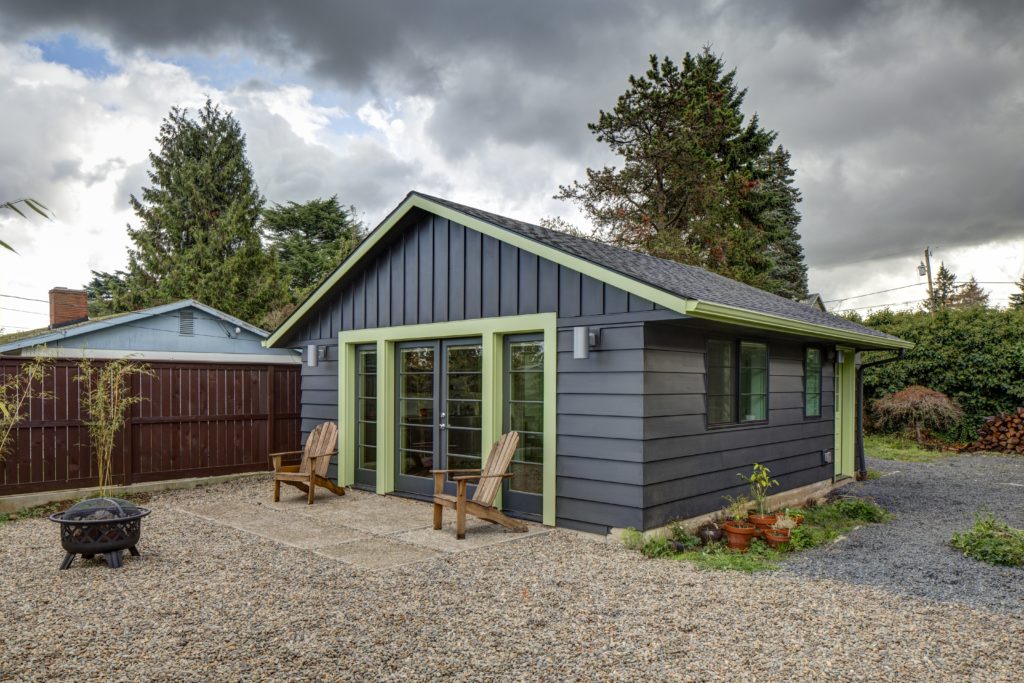Tiny homes made a big splash a few years back, with television shows, movies, websites, and blogs popping up to profile people living in very small spaces.
While the initial novelty has receded, interest remains strong: Gen Xers and millennials are leading the way in sustained receptivity to tiny homes, according to a survey released by NAHB last month. Fifty-three percent of survey respondents said they would consider purchasing a home of 600 square feet or less in size at some point in their lifetimes.
For many, the appeal of tiny homes includes greater sustainability from reduced energy needs, lower housing costs, and more leisure time enabled by streamlining homeowner responsibilities.
Fortunately, suppliers have become increasingly more sophisticated at creating products designed for tiny spaces.
Enterprising developers are even creating entire tiny-home lifestyle communities, such as Village Farm outside Austin, Texas. The community will be host to 112 tiny home sites, with homes built by Athens, Clayton, Platinum and Wheelhaus. Homes average 400 square feet and start at $70,000. Amenities include a slate of community programs, two swimming pools, dog parks, community gathering spaces, a general store, a water-harvesting program, and options for shared meals and transportation.
Breaking Down Barriers
A big challenge to tiny homes in many communities, however, has been local zoning regulations that currently prohibit or limit the existence of tiny houses as primary residential units on standard lots.
One path towards greater acceptance and accommodation of tiny homes has been through accessory dwelling units (ADUs). More local governments, especially those struggling with high-cost housing markets, are seeking to encourage ADUs (also called granny flats or in-law units), which include attached or detached residences that share a land parcel with a main house.

Photo by Jeff Amram Photography
ADUs offer a sustainable way to add affordable and diverse housing options for couples, small families, friends, young people, and seniors that integrate easily with established neighborhoods and infrastructure. Built with one- or two-story wood frame construction, ADUs can provide as much living space as a new apartment, but can be built more quickly and inexpensively than a unit in a new multifamily building.
Other advantages of ADUs include offering homeowners flexibility to provide independent living space for family members and others, allowing seniors to age in place, and helping extended families to be near one another while maintaining privacy. Rental units can also provide additional income to homeowners.
Boosting Production
Merely allowing ADUs in a community is typically inadequate to generate much actual production. Rather, accompanying zoning reforms are essential to realize the full potential of ADUs as a viable housing option.
Success stories for facilitating the construction of ADUs have particularly emerged from the Pacific Northwest in the U.S. and Canada. In the cities of Portland, Seattle, and Vancouver, local governments have adopted zoning reforms to boost ADU construction, sometimes in coordination with financial incentives and outreach programs.
In 2009, ADUs accounted for only 3.0 percent, 0.8 percent, and 0.6 percent of issued housing permits in Portland, Seattle, and Vancouver, respectively. In 2015, following zoning overhauls and other policy measures designed to facilitate ADUs in all three cities, housing permits had risen to 10.9 percent, 2.1 percent, and 6.3 percent, respectively.
In California, the importance of ADUs as a housing strategy has recently gotten a boost from state law: since January 1, 2017 ADUs have been legalized statewide. The state law mandates that local jurisdictions permit ADUs without discretionary review and provides guidance on parking requirements, the permitting process, design requirements, fees and more.
Two reforms—streamlined permitting and reduced parking requirements— have generated the biggest impact on the influx of ADU applications in the Golden State. The result has yielded the desired effect: a huge increase in permit applications for ADUs throughout the state. Los Angeles saw the biggest increase, shooting up rapidly from 80 applications in 2016 to 1,970 applications as of November 2017. Oakland, which had 99 applications in 2016, jumped to 247 in 2017. San Francisco has been experimenting with looser ADU regulations since 2013, but still saw applications increase over 50 percent, from 384 in 2016 to 593 in 2017.
What is next for ADUs and tiny homes? With communities around the country seeking sustainable solutions for more affordable housing, the trend may be here to stay. And keep an eye on California as a test ground for the nation.
Post by Deborah Myerson, Executive Director at South Central Indiana Housing Opportunities (SCIHO) in Bloomington, Indiana.

